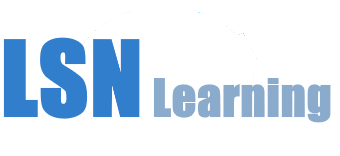What tools & equipment do Scaffolders need?
Without tools and equipment a scaffolder is just a person.
Without tools and equipment a scaffolder is just a person.
If you want to erect safe scaffolding you need to make sure that you have the right training, the right team of people and the right tools and equipment. The tools and equipment that you need can differ slightly, depending on what type of scaffold you are trying to construct. Basic scaffold supplies are as follows:
These are the pieces of scaffold that workers walk on. They need to be of a sufficient size for your frames, and they need to be made of suitable materials.
“Planks” are usually wooden boards or steel/aluminium. If you are using wooden planks they must be treated properly to prevent them from rotting. All planks should be strong enough to hold at least two average sized men.
These are the diagonal bars which go across the frame in scaffold structure. Creating triangle shapes with these diagonal bars helps to give the structure extra strength, meaning that it is able to support heavier loads. This allows the scaffold to be built higher safely. In addition to this, these cross bars also make it harder for people to accidentally fall off of the scaffold.
These are the bars and poles which are used to make up the general structure of the scaffold. They must be regularly checked over to make sure that they are in good enough condition for continued use. Scaffold poles which are starting to rust should not be used, as they will not be as strong as they should be.
Pins and clamps are the devices which are used to connect all of the pieces of scaffold together. These must also be checked regularly, because if one pin or clamp fails then it can seriously affect the integrity of the entire scaffold structure may be compromised.
Base plates should be put under the lowest scaffold poles. These plates spread out the weight of the scaffold so that the legs put less pressure onto the ground. This may mean that they don’t sink into the ground as easily as they might otherwise. They also help to prevent the poles from slipping when the ground is softer or uneven.
Depending on the intended use, the location and the type of scaffolding that has been erected, additional safety features may be needed. Safety barriers are designed to give workers a little extra protection whilst they are working on scaffold structures. Although safety netting may not be strong enough to stop a person if they were to fall, it can catch tools or building components if they were to fall. This can help to protect people who are below the scaffold.
Scaffold works best and is safest when it is constructed on a level surface. In order to check whether scaffold has been placed on a level surface, you should use a good level. Although spirit levels were traditionally used, electronic levels are now becoming more common. These levels are more accurate and they are less likely to produce a faulty reading.
A tape measure is used to make sure that the scaffold is built according to the requirements which are set out by the plan. Scaffold must be carefully planned to ensure that it meets the needs of the commissioner as well as meeting national health and safety regulations. It is therefore important that scaffolders follow their plans accurately.
Without spanners or preferably a good socket set you’ll never be able to tighten up clamps and anything else that has nuts, virtually.
A decent socket set is preferred as it makes the tightening and loosening nuts so much faster, and is a real time saver.
A claw hammer is one of the most important tools that any scaffolder could have. These hammers allow people to drive pins and clamps into place securely, but they can also be used to pull pins out more easily when the scaffold is being disassembled. Different sizes and weights of claw hammer are available.
When a scaffolder is working on a construction site in the United Kingdom they must make sure that they are wearing proper personal protective equipment to help to protect themselves from potential harm. This equipment includes a high visibility jacket, a hard hat and steel-toed boots. If you are working in a noisy environment then you may also need to wear ear protection.
If you are working at height, you should ensure that you are wearing a safety harness and that you are properly attached.
LSN Learning,
Bootle,
Merseyside.
e-mail: lee@lsnlearning.org.uk
